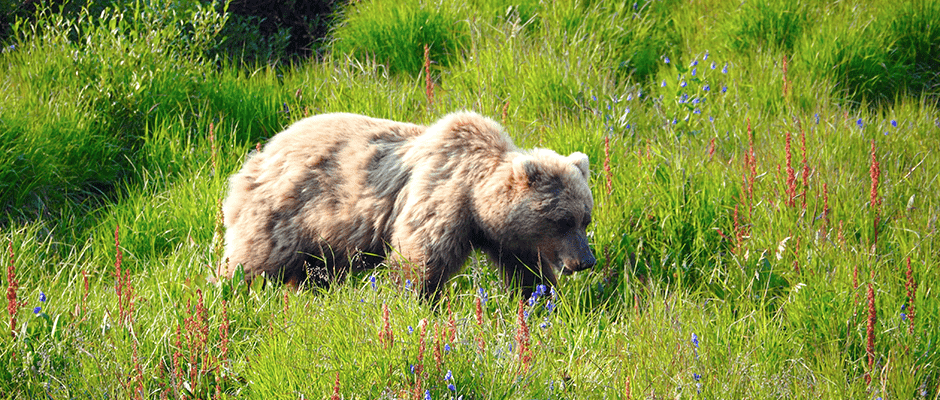Share this article
Legal developments in the ESA status of the grizzly bear
The status of grizzly bear populations under the Endangered Species Act is facing mounting legal arguments in the courts since August. There are five populations of grizzly bears in the lower 48. The U.S. Fish and Wildlife Service has decided to delist the grizzly bears in the Greater Yellowstone Ecosystem (GYE) and reclassify others.
On Aug. 22, U.S. District Judge Dana Christensen overturned the reclassification of a grizzly bear (Ursus arctos horribilis) population living near the US-Canadian border, ruling that animals and plants can be considered endangered even if they are not about to go extinct. USFWS reclassified this population as “threatened” in 2014 as this grizzly bear population is “not on the brink of extinction.” The court found that the USFWS cannot narrow the definition of an endangered species for future decisions without explaining why it wants to make the policy change, as the court believes the agency did in this case — defining the grizzly bear as not on the “brink of extinction,” and therefore not endangered. The judge said that in order to use the “brink of extinction” interpretation, USFWS must prove that federal law allows for it and explain why that interpretation is needed.
On Aug. 30, two lawsuits were filed challenging USFWS’ June decision to delist the grizzly bears of the Greater Yellowstone Ecosystem (GYE). One of the lawsuits was filed in the U.S. District Court for the District of Montana by the Western Environmental Law Center on behalf of WildEarth Guardians. The lawsuit says that the delisting of the 700 GYE grizzly bears did not conform to the best available science and was therefore not in accordance with the law. The other lawsuit, filed in the same court by a coalition of four groups — the National Parks Conservation Association, the Northern Cheyenne Tribe, the Center for Biological Diversity, and the Sierra Club — all represented by Earthjustice, makes similar arguments. A third lawsuit was filed Sep. 7 by the Alliance for the Wild Rockies, Western Watersheds Project, and Native Ecosystems Council. The lawsuits claim that the USFWS did not have the authority to establish the Greater Yellowstone grizzlies as a distinct population. Some of the lawsuits also claim that the decision to delist ignored a number of ongoing threats to grizzlies — including a record high number of grizzly bear deaths caused by humans in 2015 and 2016 and threats to their food sources from invasive species and climate change.
These were not the first lawsuits to challenge this ruling. A broad coalition of 16 Native American tribes, tribal groups, and individuals filed a lawsuit in June. They challenged the ruling on the basis that tribal groups were largely left out of the decision making process. These lawsuits are a continuation of a longstanding dispute over how to best manage grizzly bears in the continental U.S. The first attempt to delist the GYE grizzly bears was made in 2007.
Read TWS’ position statement on the Delisting of Grizzly Bears in the Greater Yellowstone Area.
Header Image: ©Denali National Park and Preserve








